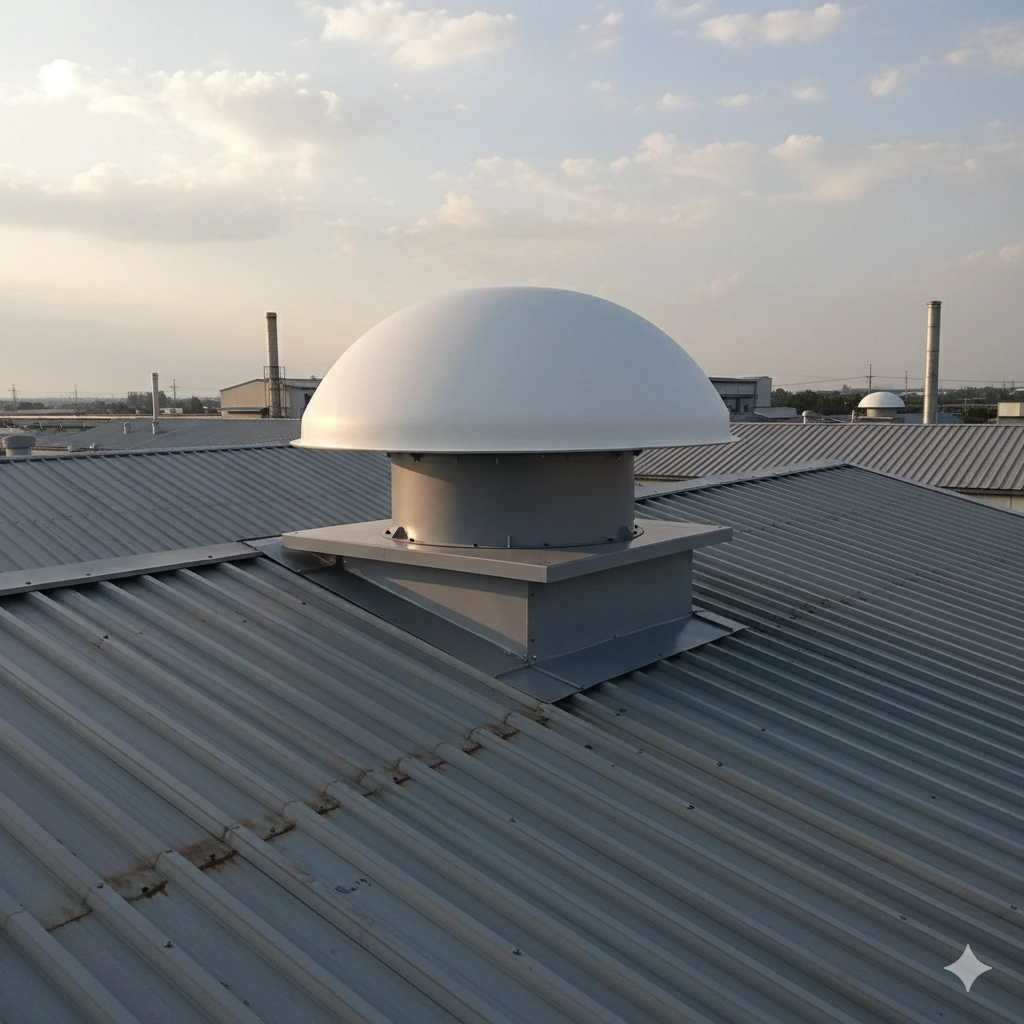
Roof Extraction Fan Upgrade Checklist for Indian Rooftops
Adding a weatherproof roof extraction fan is one of the fastest ways to remove trapped heat, fumes, and smoke from busy production floors. Yet many retrofit projects stall due to sizing errors, poor curb design, or unplanned maintenance outages. This guide distils EMVEE’s on-site experience into a simple checklist you can follow before you release the purchase order.
1. Start with a precise airflow target
Begin by gathering the physical dimensions of your shed or kitchen and the required air change rate for the process. Multiply length × width × clear height, then multiply the volume by the recommended ACH to convert to cubic metres per hour (CMH). You can validate the numbers instantly using the Quick Sizing Snapshot on our product page.
Typical ACH Benchmarks
General Warehousing:
6 ACH (keep stored goods cool and dry)
Manufacturing Bays:
10 ACH (offset process heat and fumes)
Commercial Kitchens:
15 ACH (extract grease-laden vapours)
Smoke Spill / Heat Relief:
20 ACH (support emergency extraction)
2. Match your CMH to the right RFX model
Use the calculated CMH to shortlist a model from the EMVEE RFX range. Each fan delivers a specific airflow at a given static pressure. Our standard line-up spans 8,200 CMH to 44,600 CMH per unit, with IE3 motors sized from 0.75 kW to 11 kW. When multiple units are required, space them evenly along the roof ridge or high points to prevent hot spots.
If your duct collars, bird screens, or gravity dampers introduce higher resistance, reach out for a custom selection. We maintain a full fan curve database in our online fan selector so you can adjust for static pressure and motor speed.
3. Engineer the curb and electrical interface
A robust curb or upstand is essential to keep your investment watertight. We recommend a galvanised or stainless steel curb plate anchored to the RCC slab with chemical fasteners, finished with a continuous neoprene seal. Provide a weatherproof isolator close to the fan, and specify armoured cables for outdoor routing. For ATEX or flameproof zones, use certified glands and maintain gland plate integrity.
Combine the fan with a gravity shutter or motorised damper to prevent reverse flow when the fan is idle. In cyclone-prone zones, add a tie-down kit to resist uplift. Our engineering pack includes GA drawings, load data, and wiring diagrams to simplify coordination with your contractor.
4. Validate smoke spill compliance before commissioning
Many jurisdictions now require EN 12101 certified fans for smoke control. EMVEE supplies the RFX Series in F200 and F300 variants with long-lead, dual rating motors. Run a CFD simulation when visibility requirements are tight, and ensure emergency power availability is documented in your fire strategy. Our team supports end-to-end documentation, from QAPs to witnessed tests.
Quick Pre-Dispatch Checklist
- Signed GA drawing with curb opening dimensions
- Electrical load schedule confirmed with facility team
- Accessories locked (backdraft damper, bird screen, isolator)
- Site access plan for crane or boom lift on delivery day
5. Plan maintenance around monsoon seasons
Schedule quarterly inspections to remove debris from the hood and screen, check the tightness of anchor bolts, and verify gasket condition. Lubricate bearings according to the motor manual and balance the impeller if vibration levels rise. A quick thermal scan of the starter panel during peak loading helps catch loose terminations.
Pair the inspection with a roof walk to monitor waterproofing and gutter health. EMVEE offers annual maintenance contracts pan-India, ensuring your roof exhaust fan keeps negative pressure stable even in harsh coastal climates.
Ready to upgrade your rooftop ventilation?
Share your room dimensions, target ACH, and operating temperature. We’ll send a detailed selection sheet within 24 hours—complete with CFD snapshots when required.